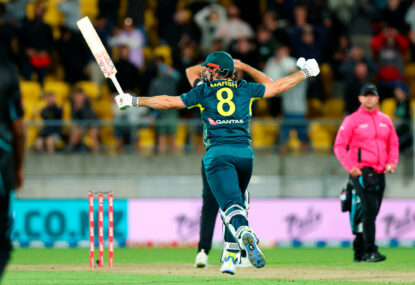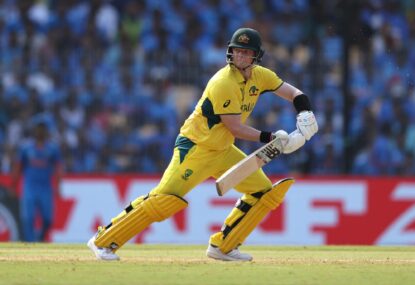So much of the focus this tour of India from those paid to write about it has been centred on the things Australia have got wrong.
A lack of warm-up matches to acclimatise to the subcontinent. Dropping Travis Head for the first Test. Picking Ashton Agar and then sending him home mid-series. That wretched sweepathon to kill the second Test in an hour of madness. Playing David Warner in the first place.
But for all that, the Aussies’ masterful nine-wicket victory over India in Indore was proof that, despite all the mistakes, they have got plenty more things right.
Against a juggernaut which has lost just twice on home soil in a decade, after losing the toss, with captain Pat Cummins back home, on a pitch made to order for two of the greatest spin bowlers in history, Australia simply out-Indiaed India. They beat the champs at their own damn game, in conditions they have been chewing visiting teams up and spitting them out in for half a century at least.
Quite frankly, it’s the team’s best victory since twice knocking over a peak South African team on their own shores in 2014 – I rate this one superior to their win over India in Pune six years ago, on the basis that then they had the better of fiendishly difficult batting conditions courtesy of winning the toss.
Australia have gone into every Test this series with slight tweaks on the same plan: tie India down with a bevy of accurate spinners, take the fight to Ravichandran Ashwin and Ravindra Jadeja with the bat, and never let the game sit still.
It came horribly unstuck in Nagpur, and was working perfectly until a disastrous third-morning capitulation in Delhi; it has now been vindicated in the grandest of fashions.
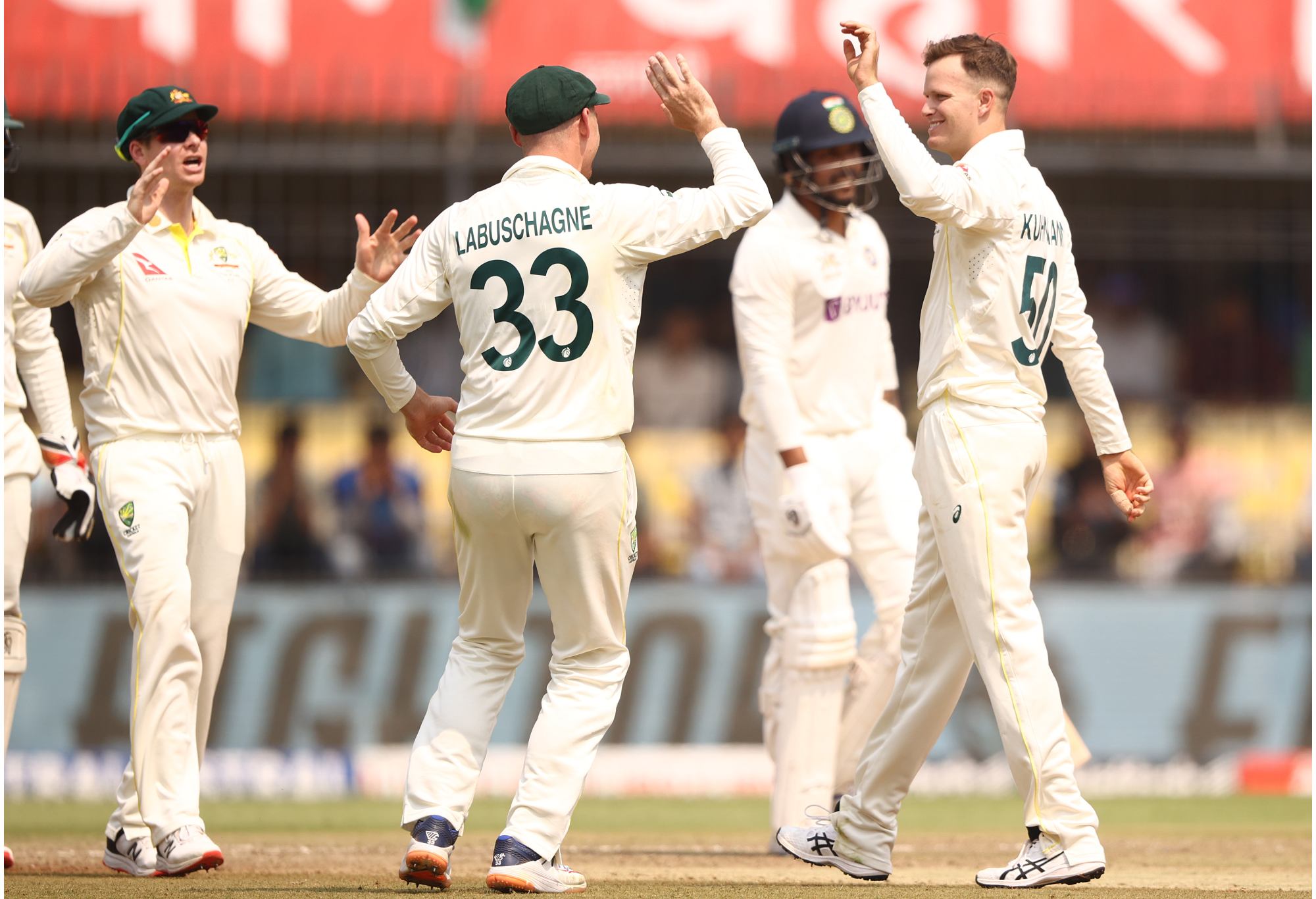
Matthew Kuhnemann celebrates taking the wicket of Umesh Yadav. (Photo by Robert Cianflone/Getty Images)
When the Australian public, and every talking head in the media you could care to name, tore strips off Australia’s madcap approach in the second Test, they could easily have thrown those plans out the window, gone back to more conventional methods, and suffered for it.
Instead, the batters were more considerate of the right balls to sweep, the right balls to come down the pitch to, and the right balls to defend with the full face of the bat. It was tempered aggression, but always underneath it was the knowledge that this Australian team was looking to score and not just survive.
Team selection deserves plenty of credit too, for aside from the Head howler, virtually every big call has been nailed. Even in that case, the issue wasn’t with Head’s replacement Peter Handscomb, but in the players retained from Australia’s last Test – Warner and Matt Renshaw – ahead of him.
Brought in out of the blue in Nagpur owing to his reputation as a fine player of spin and a more than decent tour of India back in 2017, Handscomb has looked well and truly up to the challenge in some truly nasty batting conditions.
His average of 32 – boosted by his 72 not out in Delhi – is the third-highest of any Australian this series, behind only Marnus Labuschagne (35.6) and Head (37.66); but it’s the way he’s scored his runs as much as the amount that has been truly eye-catching.
The Aussies have made a point of encouraging each batter to play in their own way this series: Usman Khawaja has been green-lighted to sweep his way to big scores, while for Handscomb, it’s to play from the crease, work singles, and smother the spin where possible.
His selection is the sort of horses for courses pick Australia have been reluctant to make over the years, even in India. Handscomb has done nothing but vindicate it every since he was given the nod.
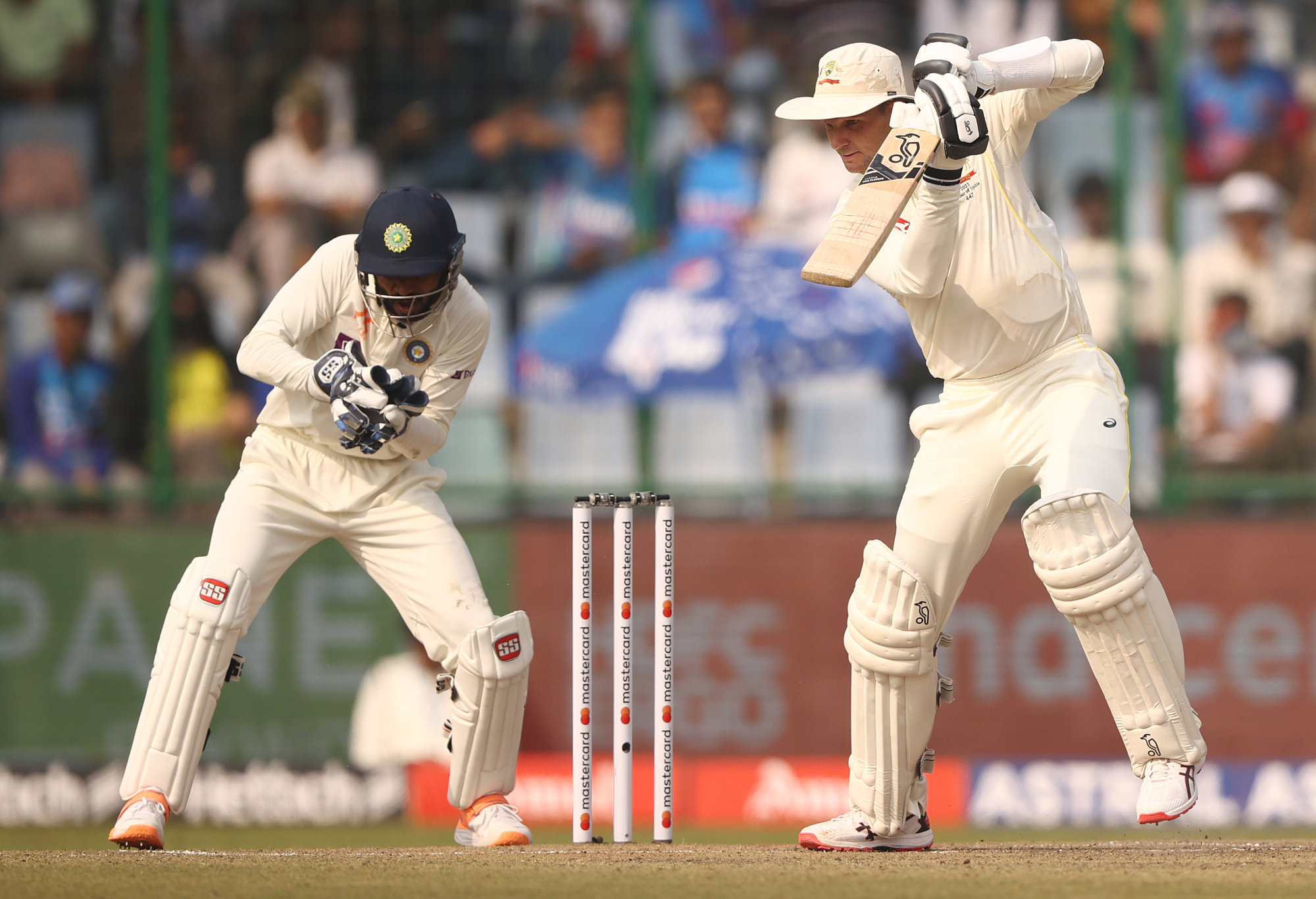
Peter Handscomb of Australia bats. (Photo by Robert Cianflone/Getty Images)
In a similar vein, the Aussies have been bold with their liberal use of an untested, raw spin-bowling attack.
Three weeks ago, Todd Murphy was seen as a smoky for a Test debut and Matt Kuhnemann was gearing up for Sheffield Shield cricket with Queensland.
Now, both have played crucial roles in a series that, though 1-2 down on the scoreline they remain, has been laden with positives for Australia. Murphy has 11 wickets at 21.81, building nicely from his debut seven-for with accuracy and patience – no player on either side has a better economy rate than his 2.61 for the series.
Kuhnemann, meanwhile, proved himself the best left-arm spinner in Australia with his match-defining five-wicket haul in Indore: no less a player than Virat Kohli has found him particularly tough to deal with
Then there’s Nathan Lyon. 10 years ago, a far more shortsighted, reactionary Australian selection committee punted him from the XI after an underwhelming first Test, only to watch as Xavier Doherty and Glenn Maxwell were pummelled into oblivion by India en route to an innings victory.
There were some – not many, but some – who wanted the same after a poor opening to the series from Lyon, especially with Murphy comfortably outshining him at the other end. Since that shaky start, though, he has 18 wickets at 11.94, far and away the best of any bowler from either side in those last two Tests.
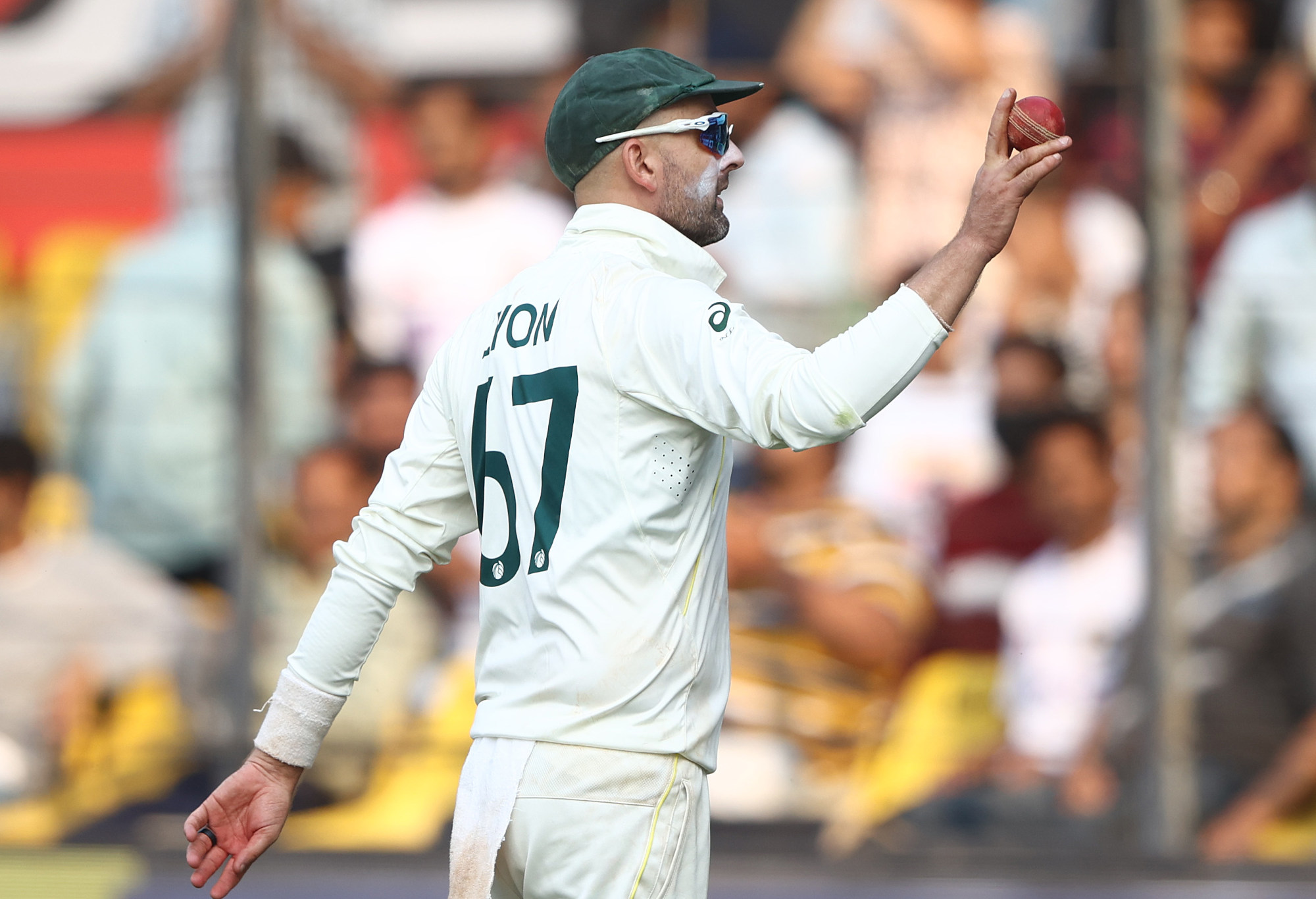
Nathan Lyon. (Photo by Robert Cianflone/Getty Images)
Previous Australian sides wouldn’t have dreamed of picking three spinners in the same team, no matter the location.
Especially when two of them had never played Test cricket before this series. Especially when the only two quicks at hand, Mitchell Starc and Cameron Green, were both playing their first matches after long lay-offs.
Indeed, Lance Morris and Scott Boland were both deeply considered to be named in Indore, presumably at the expense of Kuhnemann.
That change never happened, and Australia now have a Test victory because of it.
But if the selectors deserve credit for assembling an un-Australian, unorthodox XI that proved perfectly suited to the task at hand, Head deserves praise all for himself.
A lesser player would have been rocked to the core after being axed for the first Test, having been a dominant force over the last two home summers. A lesser player might also have felt aggrieved to, after having been recalled, be plucked from the middle order and asked to open at a moment’s notice in the second Test after Warner’s concussion-enforced absence, and then again full time in the third Test too.
But he has since made every post a winner: his freewheeling batting twice giving the Aussies ideal starts to their second innings. In Delhi, no one else could build on his 43; in Indore, his 49 not out was so good that no one else needed to.

Travis Head bats during day three at Holkare Cricket Stadium. (Photo by Robert Cianflone/Getty Images)
For all the doubts about his handling of spin, he has looked assured, proactive and focused every time he has stepped to the crease: his footwork throughout, particularly coming down the track to hit Jadeja and Ashwin off their lines, has been a delight.
It means questions – and the good kind – for the selection committee heading into the Ashes, and even more options to prevent Warner from resuming his one-sided battle against Stuart Broad. At home, Cameron Bancroft is flaying runs for fun in the Shield, while Renshaw is the incumbent second opener behind Warner; but a call could easily be made that Head, in the form he’s in, deserves a chance to showcase his wares at the top of the order.
Putting it all together, Australia can finish this series comfortable in the knowledge that they have gained, and learned, plenty from the experience. Ahead of a myriad of challenges in the remainder of 2023, including an away Ashes and a World Cup back on these shores to close out the year, they have shown the resourcefulness, resilience and resolve to face them all head on with the utmost confidence in their methods and tactics.
Fans used to Australia dominating all rivals from pillar to post, and expecting success in all corners of the world, need to realise this, too: even winning a single Test in India is an exceptional achievement for a touring side.
This is the toughest place in the world to play cricket, and as antithetical to traditional Australian climes as you can get. And if the conditions weren’t hard enough, you then come up against the resident colossus of world cricket, with two all-time spinners, a fearsome batting order that runs as deep as Ashwin, a man with five Test centuries, at No.9, and a billion people to choose from for any replacements that need be made.
Australia won’t be regaining the Border-Gavaskar Trophy this series. But, regardless of what happens in the final Test in Ahmedabad – and yes, India will start warm favourites once again – they can move to their next assignment with heads held high, after a tour that now must at least be deemed a qualified success.
Australia have got plenty of things wrong this series. But they’ve got even more things absolutely right.






































































































